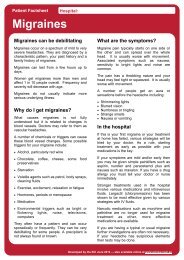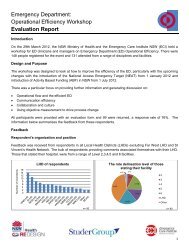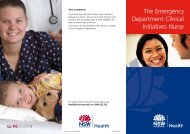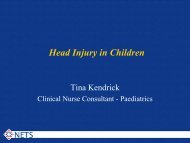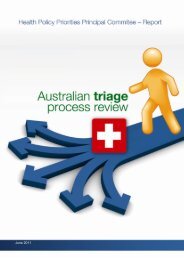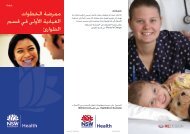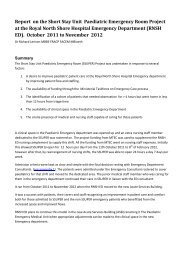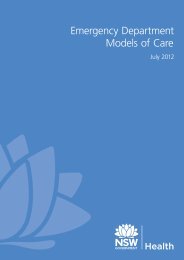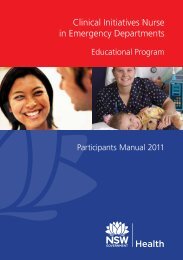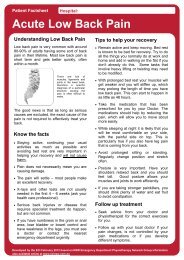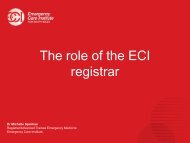Facilitators Manual - Emergency Care Institute
Facilitators Manual - Emergency Care Institute
Facilitators Manual - Emergency Care Institute
Create successful ePaper yourself
Turn your PDF publications into a flip-book with our unique Google optimized e-Paper software.
5.6 Secondary SurveyHistoryHead/NeckChestAssessment Tips Yes No• Accurate assessment of history/mechanism of injury incorporating:- A – Allergies- M – medications- P – past medical and surgical history- L – last eat and drank- E – Events surround presentation/reason for presentingPerforms a comprehensive head to toe examination.- Completes a full GCS distinguishing responses, stimulationmethods and documents appropriately- Describes and documents seizure activity• Looks for:- Asymmetry- Eye movement- Fluid drainage from nose/ears- Ecchymosis under eyes• Feels for:- C-spine tenderness (trauma)- Facial bone movement- Pain and crepitus (ask patient to clench teeth)• Interventions- Application of a cervical spine collar/spinal immobilisation- Obtains a full GCS including assessment of limb strength(modified GCS for paediatric)- Appies eye patch/shield when appropriate (foreign body,ocular trauma)- Irrigates eye (when appropriate)• Looks for:- Work of breathing° Recession° Tracheal tug° Accessory muscle use° Posture- Observe the chest wall for movement and symmetry• Listens for:- Ability to speak in words, phrases- Auscultates the chest• Feels for:- Chest wall integrity (subcutaneous emphysema)- Central cap refill• Interventions- Documents respiratory rate and pattern- 12 lead ECG45Table continued next page




